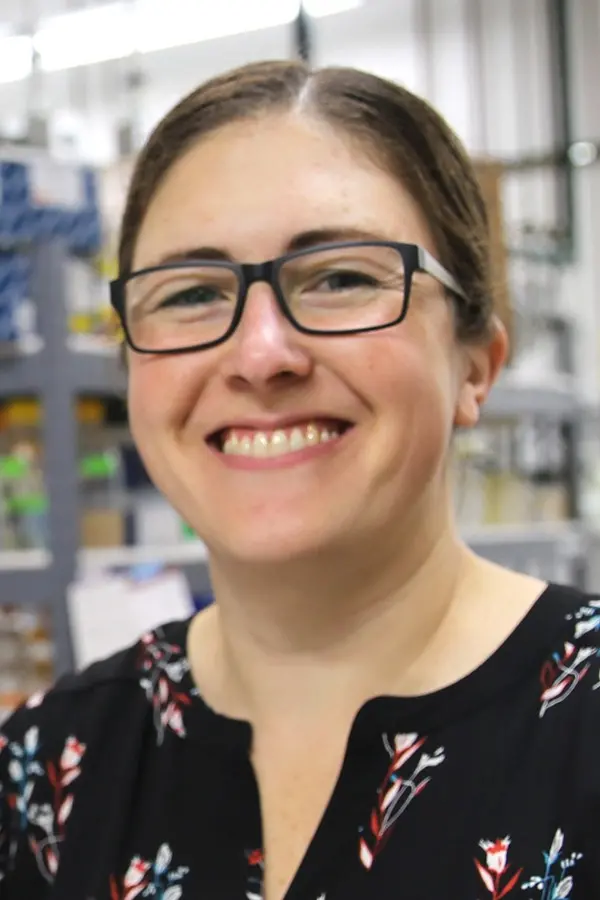By shining the right wavelength of light on cells outfitted with specific, light-sensitive proteins, scientists can turn cellular processes on and off—and in doing so, drive production of chemicals that are in demand for therapeutic drugs, biofuels and more.
But designing and optimizing those optogenetic systems (identifying the right genetic composition and light stimulation patterns across cell cultures) is rather tedious, requiring repeated design-build-test cycles.
University of Wisconsin-Madison biomedical engineering researchers have outlined a scheme for accelerating that workflow, developing a new technique that enables high-throughput testing of optogenetic systems. Zack Harmer, a PhD student in cellular and molecular biology, and Megan McClean, an associate professor of biomedical engineering, have detailed their work in a paper published in July 2023 in the journal ACS Synthetic Biology.
 McClean
McClean
“One of the benefits of working with cell culture and, in our case, microbes, is you can test a lot of different conditions, you can test a lot of different strains,” says McClean, whose lab studies biological signal processing. “And there’s workflows developed and equipment for that, but it has never been integrated with light so that you could use optogenetics. So it’s kind of been limiting the power of optogenetics. Zack has now put it into a system that many labs are comfortable with, so that makes it a bit more plug and play.”
Harmer integrated a toolkit for quickly assembling optogenetic circuits (that McClean’s lab published in 2020) with devices for illuminating, shaking and reading optical measurements, using a robotic arm to move a 96-well microplate between the three stations on an automated schedule.
McClean says Harmer’s scheme cuts the time of optimizing an optogenetic system from roughly four months to two weeks. The Wisconsin Alumni Research Foundation is pursuing a patent on the technique, which has already generated interest from other academic research labs as well as the private sector.
“Being able to do this on a high-throughput scale, we can test lots of different conditions for optimizing to more quickly and cheaply figure out different bioproduction strategies,” says Harmer, who’s working on a pair of companion papers to help encourage adoption of the method. “Where most other experimental methods can test eight to 12 conditions in parallel timecourses, with mine I’m able to now do hundreds at once.”
Harmer plans to explore opportunities to work with other model organisms beyond the McClean lab’s workhorse yeast, Saccharomyces cerevisiae. He and McClean are also particularly excited to uncover tactics for activating different proteins—short pulses to trigger one; longer for another, for example—which would allow them to independently control multiple systems at once.
“There are only so many wavelengths of light that proteins respond to easily,” says McClean. “And Zack can do high-throughput-enough experiments to say, ‘This system is sensitive to short pulses of light and this is sensitive to long,’ and so we could control two different optogenetic systems. So now as opposed to maybe only being able to control a couple of things with light, it really expands our toolkit. For engineering applications, that’s important.”
 The robotic arm in Harmer’s setup moves a 96-well microplate on an automated schedule.
The robotic arm in Harmer’s setup moves a 96-well microplate on an automated schedule.
The research was funded by grants from the National Institutes of Health (R35GM128873) and the National Science Foundation (2045493).
Top photo caption: PhD student Zack Harmer works in the lab in the Engineering Centers Building. Photos by: Tom Ziemer.